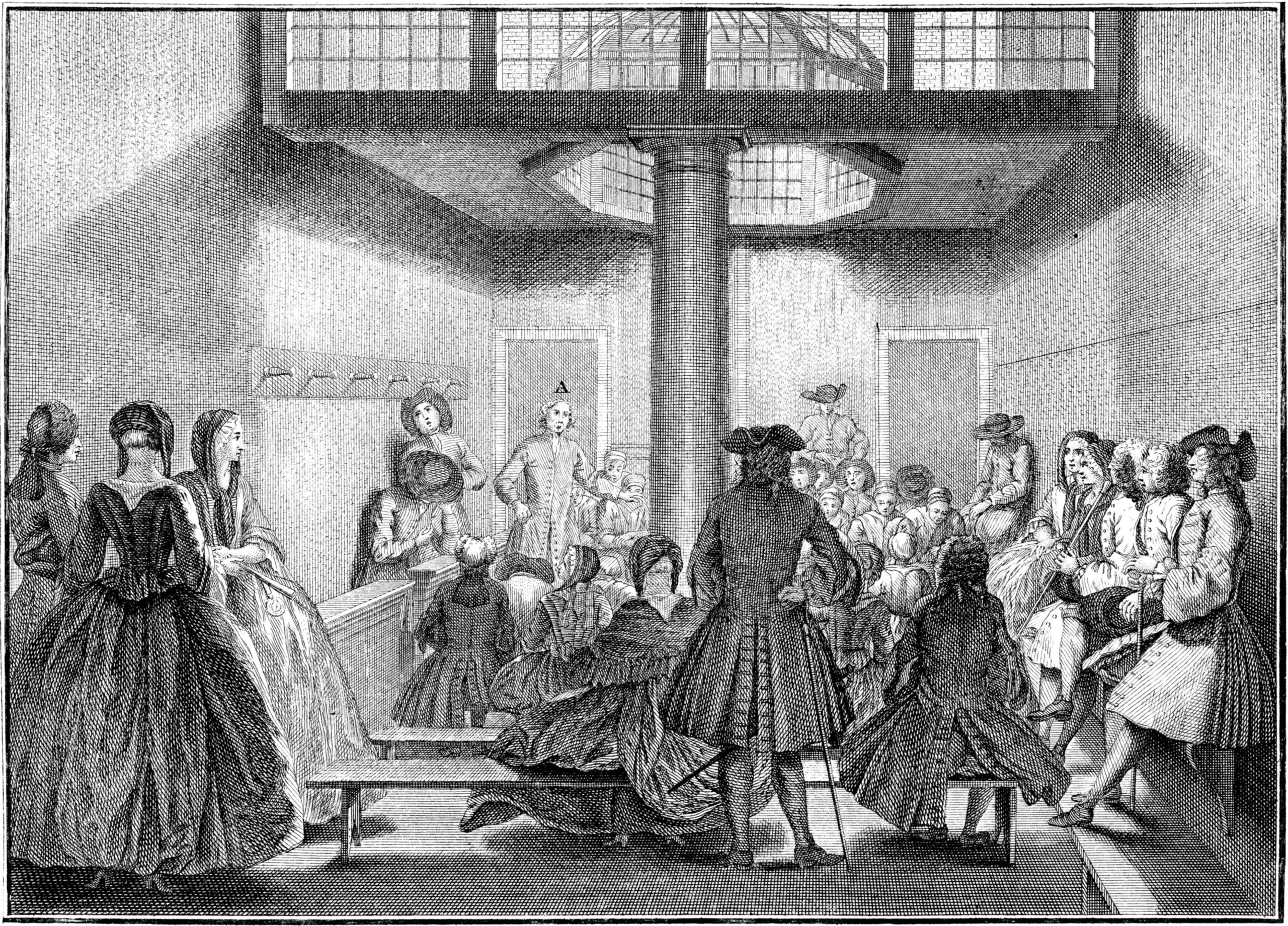Te Laudamus—a hymnal supplement made up of predominantly Reformation chorales (most not included in current hymnals) with some other older and newer hymns (also not included in current hymnals), the Willan setting of the Divine Service, Reformation settings of Matins and Vespers, and all 150 Psalms and the Propers pointed to the Gregorian Psalm Tones—will be published this summer, 2024.
About a decade ago conversations were numerous among colleagues and friends about how many Reformation chorales, core Lutheran hymns, were missing in current hymnals, like Luther’s O Lord, Look Down from Heaven, Behold and Paul Gerhardt’s I Will Sing My Maker’s Praises, just to mention only two of the many. Because the church was being deprived of so many of its historic hymnic gems, it seemed evident to us that our current repertory needed to be supplemented. We also observed we were being deprived of some of the original hymn stanzas written for these gems, which were identified for us in the 2012 publication of Walther’s Hymnal, edited by Matthew Carver. With the aid of this new reference and with the assistance of older hymnals, the idea of producing a hymnal supplement to remedy the above was conceived.
A pastor from Michigan, the Rev. Joel Hensel, approached me, seeking his help to revise and expand the hymnal of the Protes’tant (accent on “tes”) Conference, A New Song, 1975. Rev. Hensel knew me well, ever since we were schoolmates and friends at Concordia, Bronxville and at Concordia Seminary, St. Louis. Joel served as pastor of an independent Lutheran congregation in the Protes’tant Conference. For a history of that Conference, one may refer to its magazine, Faith-Life.
Long story short, I agreed to help, the Protes’tant Conference supported the project, and work on what evolved into the production of the hymnal supplement, Te Laudamus, began. Rev. Hensel became the chief-editor. I was his assistant. Rev. Michael Frese agreed to publish the book, and until recently served as project manager and layout editor, which task Matthew Carver has now. Also on the editorial board are Pastor Jesse Krusemark, a graduate of the Fort Wayne Seminary and our music engraver, the Rev. Dr. Michael Albrecht, a retired Protes’tant pastor, and Dr. Carl Springer, a Humanities professor at the University of Tennessee.
During the last eight years at Protes’tant conferences that meet three weekends a year (in February, June, and October) I have been given time to present each stage of the hymnal’s work-in-progress, at which presentations every attendee has had the opportunity to sing through and proof the work, identify mistakes, and offer suggestions. Extensive efforts proofing the work have been made by Pastor Michael Albrecht, Mrs. Margaret Hinz, and Mr. Mel Koss. Indeed, many hands have contributed to this enterprise, and we editors are delighted that the Conference has liked our work and encouraged us every step of the way. We are especially indebted to our chief-editor, Rev. Joel Hensel, whose influence and contributions permeate this book, and who, fortunately, was able to complete most of his editorial responsibilities before our Lord called him to his eternal home in 2018.
Work on Te Laudamus since its genesis has been guided primarily by the Gottesdienst theology of worship, practiced and taught by the fathers of the Reformation. That theology is stated so clearly in the Introduction to Lutheran Worship, 1982, where it enunciates the basic truth that worship begins with God [Gottesdienst]:
“Our Lord speaks and we listen. His Word bestows what it says. Faith that is born from what is heard acknowledges the gifts received with eager thankfulness and praise. Music is drawn into this thankfulness and praise, enlarging and elevating the adoration of our gracious giver God.”
It is noteworthy that the very first words on the cover of Te Laudamus, its title, reflect this divine direction. Te, the divine pronoun “Thee,” is purposely placed first, and laudamus (our praise of Him) second. For in worship God first creates, revives, and sustains faith in us, and then in response we thank Him in joyful praise.
In this spirit the editors of Te Laudamus proceeded. Determined to listen to God first [Gottesdienst] as the title projects, we placed God’s “hymns” first. All 150 Psalms are included—we did not presume to pick and choose, as editors have done elsewhere, reducing the number of what God perceives we need! All 150 are pointed for congregational singing to the ancient Gregorian Psalm Tones, all nine. These were used by the early church and by the church in the Reformation era, preserved in 16th century Lutheran resources (e.g., Mattheus Ludecus and Lucas Lossius), and, perhaps, were patterned after those used in Old Testament Synagogue and Temple worship.
After God speaks in His 150 Psalter “hymns,” we are given opportunity to respond with hymns written by human poets, some old (with Reformation contributions well represented) and some new (yet reflecting the theology of the Reformation)—a total of 172, numbered 151 to 322. These are organized by Church Year seasons and principal feast days and by topical categories.
Unique to Te Laudamus is that it includes more of the following than any other current hymnal:
- all 36 hymns associated with Luther as composer, and/or as poet or translator, and/or as editor (plus his Te Deum and Great Litany),
- 29 Paul Gerhardt hymns,
- 13 hymns by Martin Franzmann, and
- 24 early church Latin hymns (e.g., Ambrose, Sedulius, Prudentius), several of which have been paired with the chorales that evolved from them.
- Color images of sacred art pieces precede each major section and stand within the Hymn section before each seasonal and topical division. Black and white images of woodcuts and paintings are used within sections. Included are works by Albrecht Dürer and Lucas Cranach, and engravings from Das Babstsche Gesangbuch, 1545, the last hymnal for which Luther wrote the Preface.
In recognition of the 500th Anniversary of the Reformation, the entire corpus of Luther’s hymn and liturgical contributions are included in Te Laudamus. Since other current hymnals also include some of those Luther hymns, there are a few duplications here. However, wherever there is a duplication, TL offers the duplication in a unique musical setting and/or with a unique translation. Also, in recognition of this Anniversary, 43 other Reformation era chorales (not found in other current hymnals) are included.
As it set out to do, Te Laudamus has restored many fine stanzas of historic Reformation chorales, stanzas not included in other current hymnals. If stanzas need to be reduced, pastors now have the opportunity to make their own choices of which stanzas to omit. If reduction is not needed, pastors may wish to divide the hymn into sections, singing some stanzas perhaps before the sermon and others afterwards. Furthermore, multiple stanzas provide opportunities to use a variety of forms of alternation (e.g., congregation with choir, and/or with soloists, and/or with organ, and/or men with women, etc.). Finally, TL provides historic settings (harmonizations) by Praetorius, Scheidt, Schein, Vulpius, Hassler, and Bach (settings also not found in other current hymnals).
After God’s 150 Psalms, and our 172 hymns, the Liturgical section begins with more entries not found in any other current hymnals. First is a sturdy, churchly setting of the Divine Service, composed by the mid-20th century composer Healey Willan, arguably the finest modern setting available to the church today. It was commissioned by the LCMS Commission on Worship and published as a pamphlet folder by CPH in 1958. TL editors, however, have provided some useful additions.
For whatever reason, Willan did not compose for the congregation a setting of the Introit’s Gloria Patri nor an Alleluia (triple, double, or single). This “oversight” the editors have addressed. They have provided a section titled “Propers,” in which Propers for all Sundays and major Feast Days are set to historically appropriate music. The Introit, Gradual, and Alleluia Verse are pointed to five Gregorian Psalm Tones (Tones II, IV, V, VI, and VIII). So that the congregation can sing the Gloria Patri in coordination with the Introit’s verses that precede it, and the Alleluia with its Verse(s), TL has provided settings of these, set to the same five Tones used for the verses associated with them. No other current hymnal provides such an accessible coordination between Propers and the Service itself.
Also, in the Willan Setting, he did not compose for the congregation a setting of the Nine-fold Kyrie, appropriate for High Feasts and special occasions. This “oversight” the editors of TL have also addressed. After Willan’s Three-fold Kyrie, Te Laudamus includes a very fitting Nine-fold Kyrie, which Willan composed originally for The Hymnal 1940.
This Divine Service is followed by two ancient morning and evening Offices, Matins and Vespers, with Versicles and Responses, the Venite, and eight seasonal Responsories set to a 16th century Lutheran adaptation of the original Gregorian notes. Included also with Matins are choices of two Te Deum settings, one by Luther and the other by Willan, and a setting of the Benedictus, pointed to Psalm Tone II. In Vespers there is a setting of the Magnificat, pointed to Psalm Tone IX (Tonus Peregrinus), and a setting of the Nunc Dimittis, pointed to Psalm Tone III. Finally, also available is Luther’s Great Litany, pointed for chanting by pastor and congregation, using a melody Luther himself adapted for his German Litany.
Following the Te Laudamus liturgical section is the Appendix. As mentioned above, in it are the historic Church Year Propers (Introit, Gradual, and Alleluia/Tract Verse), as well as the Collects, pointed for chanting to the ancient Tones as preserved in Reformation sources. Listed with these are the Old Testament, Epistle, and Gospel readings associated with each observation, and a historic Hymn of the Day, along with three Auxiliary Hymns. Inserted into the Temporal Cycle are key Sanctoral observances, such as St. Stephen, St. John, and Holy Innocents, the Marian Feasts (Presentation of our Lord and the Purification of Mary, Annunciation, and Visitation), Nativity of St. John the Baptist, St. Peter and St. Paul, and St. Michael and All Angels. Also in the Appendix is an index of topics covered in 53 historic Collects for Special Needs that are placed throughout the Hymn section where there were open spaces. Finally, the Appendix includes the Proper Prefaces pointed to the Proper Tones for the pastor, a sample of the Prayer of the Church, and Instructions for the Use of Playing Handbells with the Introits, Graduals, and Alleluia Verses, with notation for the Five Gregorian Psalm Tones these Propers use.
Before hard-bound copies of Te Laudamus are published next summer, spiral-bound proofing copies will be available for sale this winter for individuals or groups that wish to use it for that purpose. Orders for proofing copies may be placed with me by sending requests to dbreuning@frontier.com. After we receive feedback from proofers and corrections are made, the hard-bound copies of Te Laudamus will be published by and purchased through Emmanuel Press.
In conclusion, as we continue listening to God’s wholesome Word and receiving Him in His Sacraments, we pray Te Laudamus will be a blessing to His Church, providing for Her an edifying, living supplement through which we will hear God’s forgiveness, mercy, and salvation, and respond to Him with thankful praise.To God alone be the glory, soli Deo gloria!



